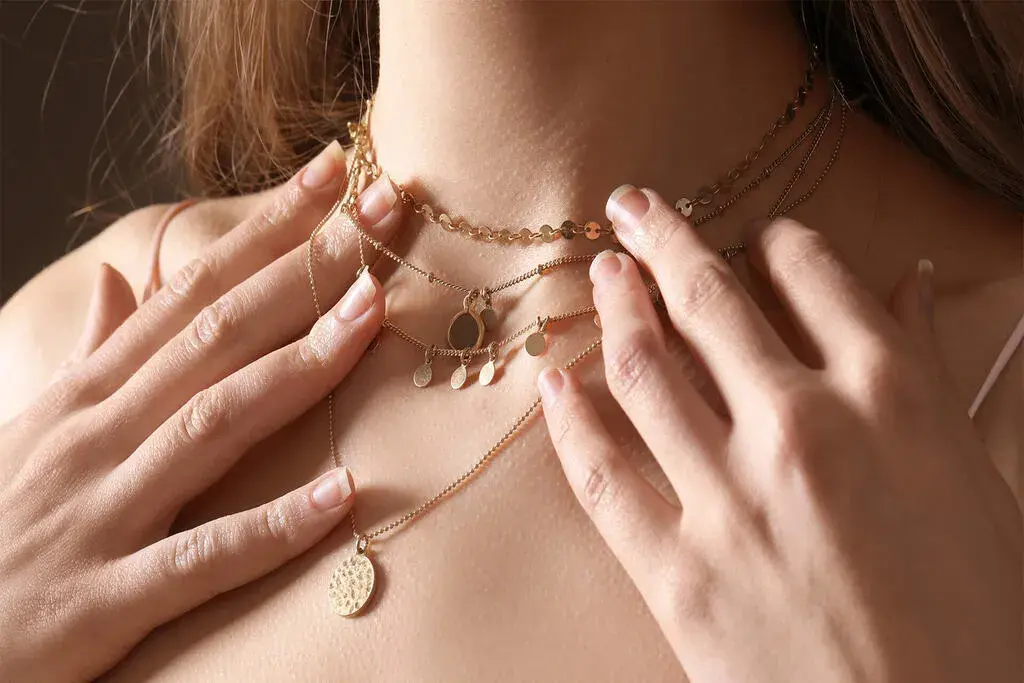The allure of chain jewelry has transcended centuries, evolving from mere adornments to symbols of status, wealth, and fashion. This exploration delves into the intricate journey of chain jewelry, unraveling its historical significance and the craftsmanship that has shaped its evolution. Through this lighthearted journey, we’ll discover how chain jewelry has intertwined with human history, culture, and innovation.
- The Origins of Chain Jewelry
- Cultural Significance of Chain Jewelry
- The Evolution of Styles
- Global Influences and Fusion Styles
- Innovations in Chain Making
- Technological Advances in Chain Jewelry
- Personalization and Customization
- The Industrial Revolution: A New Era for Chain Jewelry
- The Role of Social Media in Shaping Trends
- Sustainability and Ethical Considerations
The Origins of Chain Jewelry
The story of chain jewelry begins in ancient civilizations, where it served not only as decoration but also as a marker of social standing. From the elaborate gold chains of the Pharaohs in Egypt to the intricate silver designs of the Celts, each piece held its own story and significance. The ancient methods of forging these chains, often by hand, set the foundation for the intricate designs and techniques we see today.
Cultural Significance of Chain Jewelry

Chain jewelry’s significance extends beyond its aesthetic appeal; it has deep cultural and symbolic meanings. In various cultures, chains have represented freedom, bondage, strength, and continuity. The versatility of chain jewelry has enabled it to be a powerful symbol in social movements, religious practices, and even in modern fashion as a statement piece.
The Evolution of Styles
From the heavy gold ropes of the ancient world to the delicate and minimalist designs of today, chain jewelry has undergone a remarkable evolution in style. The 20th century, in particular, saw a burst of innovation with the introduction of styles such as the Cuban link, Figaro, and Herringbone. Each style has its own history and appeal, reflecting the changing tastes and societal values of its time. For those interested in the modern evolution of chain styles, exploring collections such as Gold Urban can provide a window into the contemporary appreciation and adaptation of these classic designs.
Global Influences and Fusion Styles
The globalization of culture and fashion has significantly impacted the design and popularity of chain jewelry. Artisans and designers from different parts of the world now readily exchange ideas and techniques, leading to the emergence of fusion styles that blend elements from diverse cultural backgrounds. These innovations enrich the tradition of chain jewelry, bridging cultures and creating unique pieces that appeal to a global audience.
Innovations in Chain Making
The Renaissance period brought with it a surge of innovation in jewelry making. Artisans began experimenting with metals, creating chains with greater flexibility, durability, and designs. The introduction of the drawplate in the 15th century was a turning point, allowing jewelers to produce more uniform links and thus more sophisticated chains. This era marked the beginning of chain jewelry’s evolution into an art form.
Technological Advances in Chain Jewelry

The advent of new technologies has further revolutionized the making of chain jewelry. Laser cutting, computer-aided design (CAD), and 3D printing have opened up new possibilities for customization and complexity in designs. These technologies have not only made jewelry-making more efficient but also more accessible to aspiring designers, sparking a new wave of creativity in the field.
Personalization and Customization
With advancements in technology and changing consumer preferences, there has been a notable shift towards personalization and customization in chain jewelry. Consumers now have the opportunity to be involved in the design process, selecting materials, specifying sizes, and even choosing individual links or pendants, making their jewelry truly unique. This trend reflects a deeper desire for personal expression and identity in the modern world.
The Industrial Revolution: A New Era for Chain Jewelry
The Industrial Revolution ushered in mass production capabilities, making chain jewelry more accessible to the public. This period saw the emergence of machine-made chains, significantly reducing their cost and allowing for a variety of new styles. The democratization of chain jewelry during this era played a pivotal role in its incorporation into everyday fashion.
The Role of Social Media in Shaping Trends

Social media has emerged as a powerful platform for showcasing and popularizing chain jewelry trends. Influencers, celebrities, and fashion icons frequently share their favorite pieces, inspiring millions of followers and setting new trends in the process. This instant exposure has shortened the trend cycle, rapidly transforming how quickly a style of chain jewelry can become popular or fall out of favor, thus continuously invigorating the market with fresh designs.
Sustainability and Ethical Considerations
As the world grows more conscious of sustainability and ethics, the chain jewelry industry is also evolving to meet these values. Responsible sourcing of materials, ethical labor practices, and the adoption of recycled metals are becoming increasingly important. This shift towards sustainability is changing the way we think about and engage with jewelry, adding another layer of value to the pieces we choose to adorn ourselves with.
Conclusion
The evolution of chain jewelry is a testament to the enduring human desire for beauty, expression, and connection. From its ancient origins to the modern day, each link in a piece of chain jewelry embodies centuries of history, innovation, and craftsmanship. As we look towards the future, the journey of chain jewelry is far from over; it continues to evolve with us, reflecting our identities, values, and dreams.
In Case You Missed It!




